Aleppo: Method to the Madness
In Aleppo, movie posters are hand-painted. They're done quite well, but there's still an element of freakishness to them, like they're always a touch more risqué than the true photos they imitate. Aleppo is orderly in an odd way. It's a large city, but the distinct neighborhoods make it feel smaller. My hotel is in the tire district. I pass belt and bearings shops on the way to the Internet café. There, I find a cluster of movie theatres on a single block. Walking toward the souk, I pass the olive-oil soap section, then the raw-meat-in-open-air department. Looking for a bank takes some doing at first, but once I find one, I discover branch after branch of Commerical Bank of Syria, each no more than 200 feet apart.
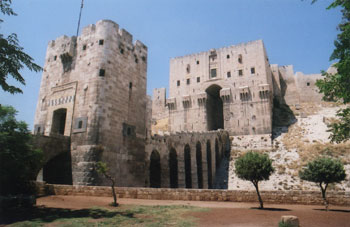 |
| Aleppo's Citadel |
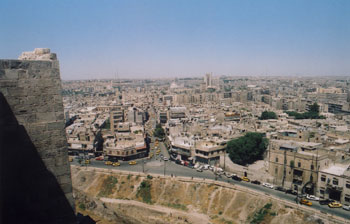 |
| View from the Citadel |
In some ways, life seems to follow a more traditional path in Aleppo, whereas Damascus draws a clear line between the old and new parts of the city. Aleppine merchants pride themselves on their craftiness, and many tourists walk away in agreement, but a local man tells me that with the advent of satellite TV, the people have become significantly lazier. Nights revolve around watching football at a bar or even crowded around a small TV on the street side of a falafel stand, and days often don't get started until 9 or 9:30am.
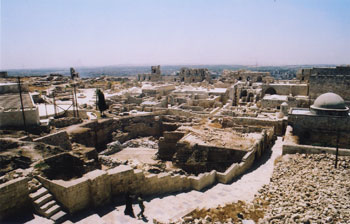 |
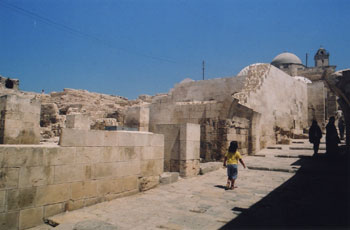 |
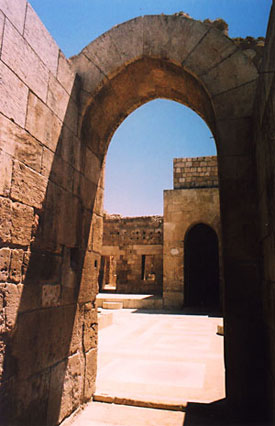 |  | 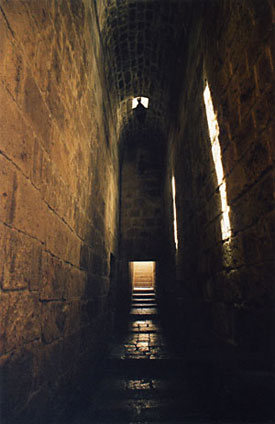 |
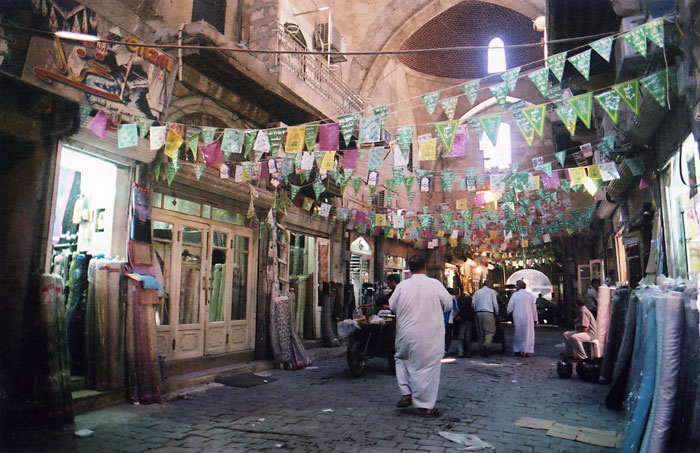 |
| Aleppo's souk |
I avoid the olive-oil soap stands, as the section outside the souk has better prices. Another time I am detained for hours. I see some cotton purses I really like, decorated with ribbons and small mirror-like pieces.
The young merchant sees something he likes as well. After convincing me to wait until his other customers leave so we can have shai and talk, he trots out a photo album to prove how handsome he is, then asks me to dinner. I laugh and say I only want to buy purses. Next door, another young man runs an all-purpose toiletries stall and laughs merrily when I question why one of my purses has a lining printed with the Honda logo. Later he snaps my photo with his cell phone. The purse seller says toiletries man wants to keep me close to his heart.
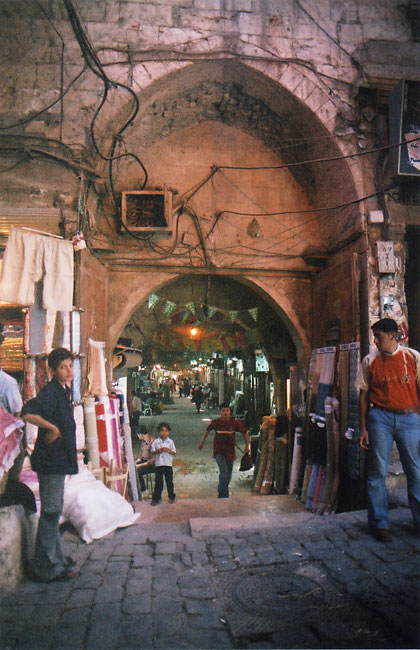 |
The jewelry seller has an enclosed shop as well. When we enter, a group of his friends are eating chicken and smoking heavily—the small shop is overwhelmed. We drink shai and peruse the jewelry. I go back and forth for a while—the pieces I love are huge, with chunky tiger's eye and lapis and large amounts of engraved silver, but the prices are barely below what I might pay for jewelry in America. I'm torn and have to think. Of course, I do buy the necklaces, as I've never seen their equal.
On my return to the souk, I pass more time with the friendly purse seller and toiletries seller, drink more tea with the jewelry maker, who insists again he could not possibly have dropped the price any further, and leave the old city for the last time.